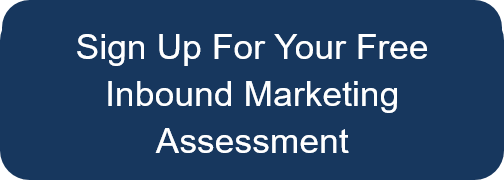Manufacturing Websites Are Missing One Critical Analytic: Conversion

Conversion is the key to return-on-investment that your manufacturing website may be missing. Many manufacturers understand the value of tracking ROI on their website. They may look at Google Analytics and be able to see traffic on the website as well as individual pages, but they are missing major opportunities to sell. Without the ability to convert visitors to leads on your website, manufacturers have no way to determine if the traffic they are seeing consists of qualified leads. Worse yet, manufacturers without a defined conversion path lose the ability to pursue leads on their website. In this blog, you’ll learn what conversion means and how to create a conversion path to start generating leads from your website.
What is Conversion?
Conversion happens when you get a visitor on your website to provide you their contact information. Once a visitor gives you their contact information (only an email is necessary), you can start tracking that lead’s behavior. What pages are they have viewed, what emails have they opened, did they answer any follow up questions. Best of all, you can provide your sales team with a 360 view of who that lead and how they move through your sales funnel based on documented behavior.
How to Create a Conversion Path
In order to get visitors on your website to willingly give you contact information, you need to offer something in return. White papers, eBooks or a free assessment or demonstration are examples that prospects may find valuable enough to receive in exchange for their contact information. It is essential to create multiple conversion paths on the website to gather information from visitors and the various pages they are viewing.
Tactics to Get Visitors to Convert to Leads
Calls-To-Action (CTAs)
CTAs are essentially links or buttons that encourage your prospects to take an action. Examples include: “Download Our Free White Paper” or “Free CAD Drawing Analysis”. To generate leads, you must have multiple, enticing calls-to-action on your website to intrigue your prospects to take action and database themselves, in return for an offer they find valuable.
Landing Pages
Once a visitor on your website clicks on a call-to-action, they will be directed to a coordinating landing pages. A landing page is essentially a web page where the call-to-action is fulfilled. The prospect will get more information about your offer and then will have an embedded form where they can submit their information to receive the offer. When the visitor fills out the form on your landing page, that visitor is now a contact in your database. Pro tip: make sure the graphics match the look of the CTA
Forms
The way visitors on your website become trackable leads is by filling out a form and submitting their information. Optimize your forms to make the conversion process as easy as possible. Remember, the length of a form on your website should match the value of the content provided. If you are just offering a subscription to your newsletter, the form should only request the person’s email. However, if you’re offering a white paper, asking for more detailed information; such as name, email, company and job title is acceptable. Manufacturers are reluctant to give their information so start small. Once you get a prospect to database themselves through a form, you can track their behavior. The core of converting prospects to leads starts with getting their email.
Check out the blogs below for more information to help you strengthen your conversion rate on your website.
3 Captivating Calls-to-Action to Drive Manufacturing Lead Generation


Leave a Reply
Want to join the discussion?Feel free to contribute!